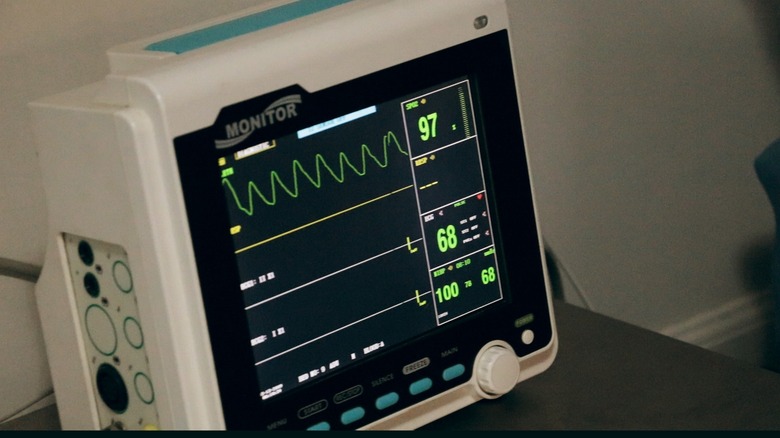What Is The Difference Between A Stroke And A Heart Attack?
Heart attacks and strokes can strike out of nowhere, and both are very serious conditions that can be fatal. Heart attacks occur every 40 seconds in the U.S., affecting approximately 805,000 people every year, per the Centers for Disease Control and Prevention (CDC). Strokes are also very common, impacting more than 795,000 people annually, according to the CDC. More frighteningly, someone is hit with a fatal stroke every 3.5 minutes in the U.S.
There are similarities between heart attacks and strokes, according to Northwest Regional Heart & Vascular, as both conditions are caused by a sudden cutoff of blood flow — the difference lies in the location of the cutoff. When you suffer from a heart attack, the blood flowing to your heart is suddenly blocked. In a stroke, the blood supply to your brain is affected. Given the seriousness of both conditions, it's important to know the difference so you can seek the appropriate treatment as soon as possible.
Knowing signs of heart attack and stroke
Knowing the difference between stroke and heart attack symptoms can be beneficial. Both require different methods of treatment, and acting fast can literally be a matter of life or death (via Tri-City Medical Center). Knowing the symptoms can help you make the right medical decisions until help arrives.
In a heart attack, blood is prevented from reaching the heart, causing damage to the heart muscle. Initial symptoms include chest discomfort, which is usually located in the center of the chest, as well as pain or discomfort in one or both arms. There may also be pain elsewhere in the body, such as in the neck, jaw, or stomach. You might experience shortness of breath, nausea, or lightheadedness (via the American Heart Association).
According to the American Heart Association, the way to spot a stroke is by using the acronym, FAST. The F is for face, meaning the face may be drooping or asymmetrical. A is for arms, meaning to check whether or not the affected person can raise both arms. One arm may feel numb or weak. S stands for speech and whether the person can still speak clearly. If not, then that brings you to T, which means it's time to call for help.
What to know about heart attack and stroke treatment
Treatment and survivability of a stroke or heart attack depend on the severity and how quickly they are treated (via Healthline). Some stroke victims may suffer long-term effects that impact their ability to walk or talk, as well as a loss of brain function, which may be permanent. People who've suffered a heart attack may have to undergo cardiac rehabilitation and some major lifestyle changes. Sticking with these changes will help prevent a recurrence, which may be far more serious.
The most important thing is to take steps to reduce your chances of having a heart attack or stroke (via Columbus Regional Health). This means making healthy lifestyle choices, including quitting smoking, exercising, and eating a proper diet. You should also begin screening for vascular disease by age 20.
The biggest similarity between heart attacks and strokes is that, in both cases, time is of the essence (via Cone Health). A stroke cuts blood flow to the brain, causing brain tissue to die. This is also the case with a heart attack — the longer it takes to be treated, the more heart tissue may be damaged beyond repair. If you suspect that you or someone you're with is having a heart attack or stroke, make sure you know the signs and call 911 quickly. Minutes can mean the difference between recovery and death.



